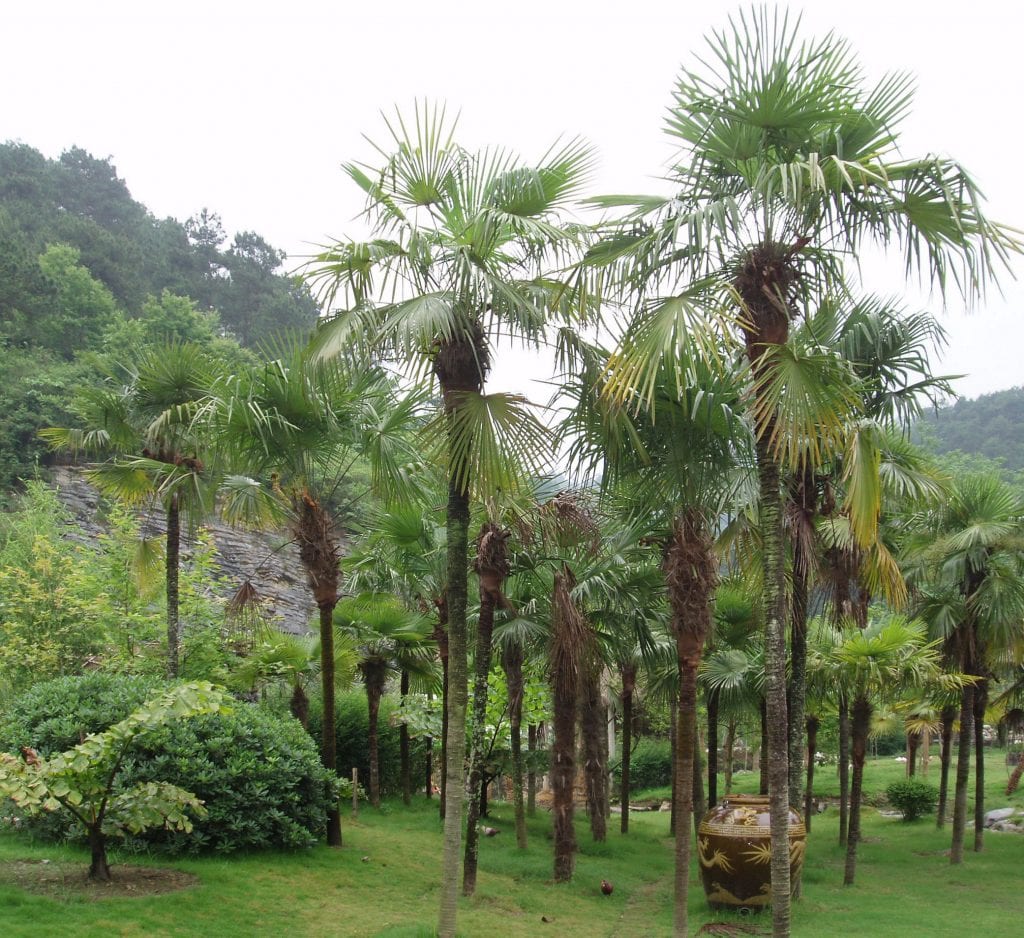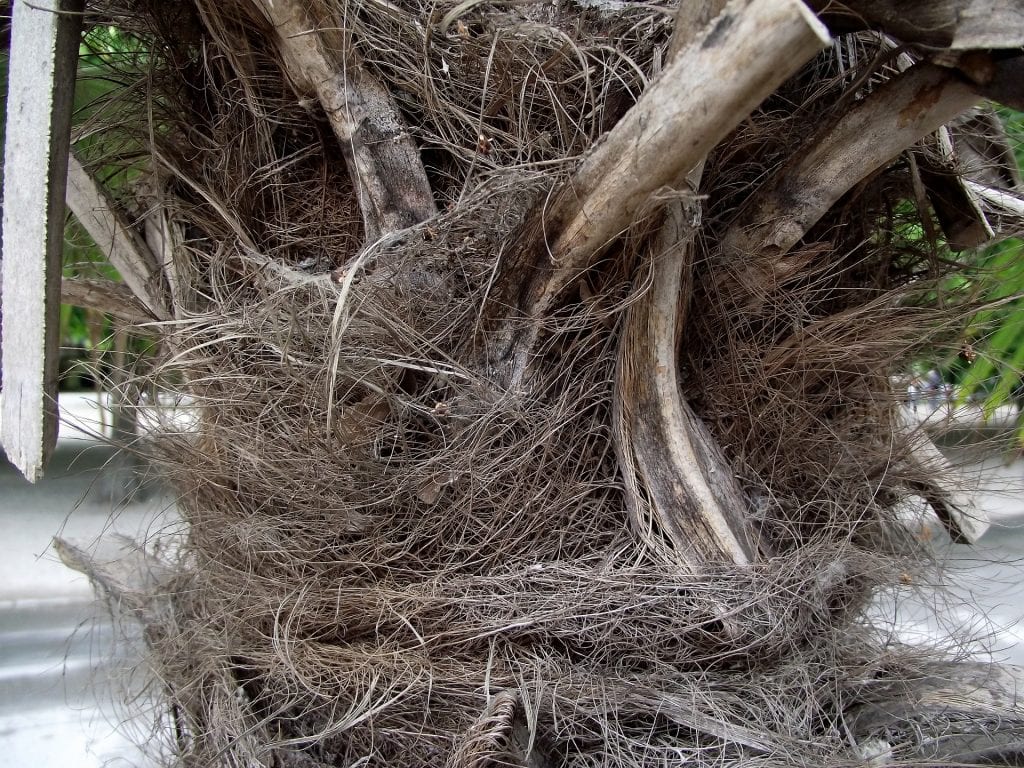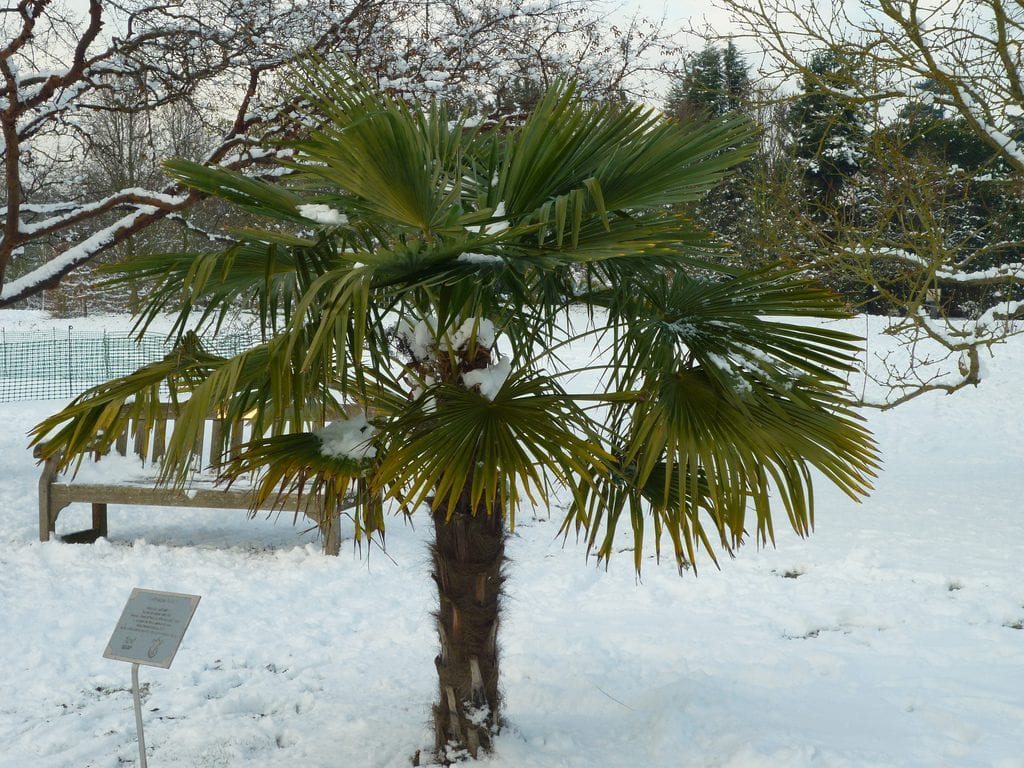
El Trachycarpus fortunei It is an incredible palm tree: it can be found in both warm and very cold gardens, thanks to the fibers that protect its trunk. In addition, although it can reach a height of 15 meters, its trunk always remains thin, with a thickness of up to 40 cm in diameter.
It is suitable for potting, although it can also be planted in small gardens. Discover this extraordinary palm tree.
Trachycarpus fortunei characteristics

Our protagonist, known by the popular names of Palmetto elevated, Palmera excelsa or Palm of a windmill, is originally from China. It has palmate leaves, dark green on the upper side, and light on the underside. The trunk is highly protected by fibers, which are very useful to cope with the frosts and / or snowfalls that occur in its natural habitat.. The flowers appear in clusters and are bright yellow. The fruits measure about 1cm, and are bluish-gray in color.
It is a medium-growing palm, that is, it is neither very fast nor very slow. So so, can grow at a rate of 15cm / year.
How do you take care of yourself?

If you want to have one or more specimens, provide these cares and you will see how they beautify your garden, or your patio:
- Location: outdoors, in full sun or in semi-shade.
- Irrigation: frequent, two to three times a week.
- Subscriber: During spring and summer it is highly recommended to fertilize with specific fertilizers for palm trees, or with liquid organic fertilizers, such as guano.
- Pruning: It's not necesary. Remove only the dry leaves in the fall.
- Transplant: if it is potted, it has to be changed every two years; and if you want to plant in the ground, you have to do it as soon as the risk of frost has passed.
- Soil or substrate: it must have good drainage. If you don't have it, it can be mixed with perlite to prevent the roots from rotting.
- Plagues and diseases: it is very resistant, but preventive treatments must be carried out during the warm months against the red weevil and against the Paysandisia archon with Imidacloprid and Chlorpyrifos, using one month and the next the other.
- Multiplication: by seeds in spring.
- Rusticity: supports up to -17ºC.
What did you think of this palm tree?
Good afternoon Monica,
I wanted to know how tall this palm tree could reach in a large 70x70x70 cm pot. This pot will be the one you always have and cannot be transplanted. Would there be any problem with this?
Hello Ezequiel.
At most it would grow about 3 meters, or maybe 4.
It can be potted for many years, but only if it is paid in spring and summer with a specific fertilizer for palm trees or an organic one such as guano (liquid) following the instructions specified on the package.
Regards!
Hello . I have moved house and I have a palm tree, it seems to me that it is scelsa in the garden, it is covered by ivy, I do not know if it is good to remove it or not.
Hello Cristina.
Yes, it would be the ideal, to let the trunk breathe.
Greetings.